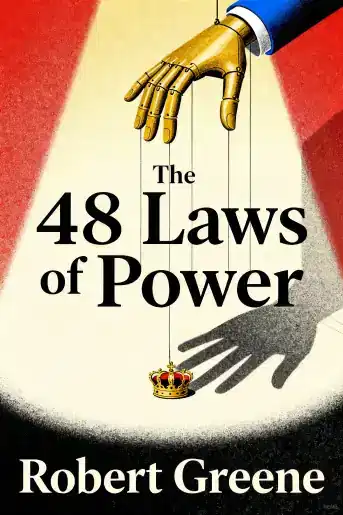What is
The Laws of Human Nature about?
The Laws of Human Nature by Robert Greene analyzes 18 psychological principles driving human behavior, blending historical case studies (e.g., Pericles, Martin Luther King Jr.) with insights on irrationality, empathy, and self-mastery. It teaches readers to decode social dynamics, manage emotions, and influence others by understanding innate tendencies like narcissism, envy, and conformity.
Who should read
The Laws of Human Nature?
This book suits leaders, professionals, and anyone seeking to improve relationships or self-awareness. It’s ideal for readers interested in psychology, strategy, or historical examples of human behavior. Greene’s insights help managers, negotiators, and those navigating complex social environments.
Is
The Laws of Human Nature worth reading?
Yes, for its depth in analyzing behavior, though some critique its length (~500 pages) and occasional Machiavellian advice. It offers actionable strategies for self-control and understanding others, but readers should contextualize its historical anecdotes against modern psychology.
What are the main concepts in
The Laws of Human Nature?
Key ideas include:
- Self-awareness: Recognizing irrational emotions.
- Empathy: Understanding others’ hidden motivations.
- Dark traits: Managing narcissism, aggression, and envy.
- Nonconformity: Resisting social pressure to find purpose.
How does Robert Greene use historical examples in the book?
Greene illustrates laws through figures like Queen Elizabeth I (mastery of image) and Anton Chekhov (overcoming toxic upbringing). These stories show how timeless behaviors shape success or failure, providing concrete lessons on power and human flaws.
What is the Law of Irrationality in
The Laws of Human Nature?
This law explains how emotions drive poor decisions. Greene advises cultivating self-awareness to detach from biases, using rational analysis to avoid self-sabotage. Example: Chekhov’s empathy neutralized anger toward his abusive father.
Can
The Laws of Human Nature help in professional settings?
Absolutely. It teaches leaders to motivate teams, spot manipulation, and negotiate effectively by understanding core drives like pride and insecurity. Strategies include mirroring others’ emotions and framing ideas to align with their values.
What critiques exist about
The Laws of Human Nature?
Critics argue some advice (e.g., “strategically strike narcissists”) risks fostering manipulation. Others note Greene’s reliance on historical over scientific evidence and the book’s dense structure. However, its pragmatic insights remain widely praised.
How does
The Laws of Human Nature compare to Greene’s other books?
Unlike The 48 Laws of Power’s overt strategizing, this book emphasizes introspection and empathy. It’s less about dominating others and more about mastering oneself to navigate social complexity.
What is the Law of Narcissism in
The Laws of Human Nature?
This law examines narcissistic traits and advises calmly observing such individuals’ insecurities rather than confronting them. Greene warns against getting drawn into their dramas and suggests leveraging their need for admiration.
Does
The Laws of Human Nature discuss empathy?
Yes, empathy is framed as a strategic tool to see others’ perspectives, build trust, and defuse conflicts. Greene stresses “radical empathy”—understanding even toxic behavior’s roots—to foster influence.
Are there actionable steps in
The Laws of Human Nature?
Each law includes exercises, like journaling to track biases or role-playing to practice perspective-taking. Greene also offers tactics for handling difficult personalities, such as diverting narcissists’ focus or appealing to others’ self-interest.
How long is
The Laws of Human Nature?
The book spans 624 pages, with in-depth case studies and analysis. Time-constrained readers may prefer the audiobook or summary guides, though the full text provides comprehensive examples.














